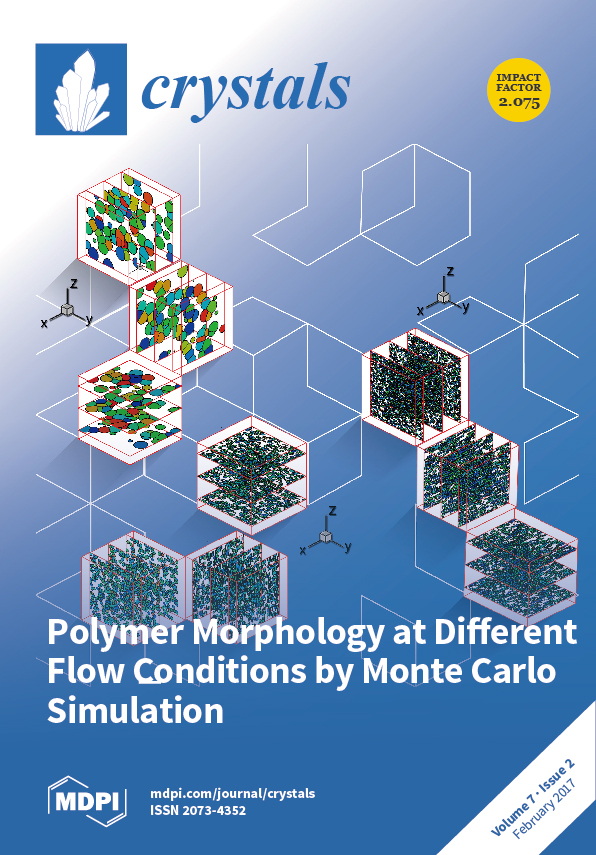The bixbyite structure of In
2O
3 has two nonequivalent, 6-coordinate cation sites and, when Sn is doped into In
2O
3, the Sn prefers the “
b-site” and produces a highly conductive material. When divalent/tetravalent cation pairs are
[...] Read more.
The bixbyite structure of In
2O
3 has two nonequivalent, 6-coordinate cation sites and, when Sn is doped into In
2O
3, the Sn prefers the “
b-site” and produces a highly conductive material. When divalent/tetravalent cation pairs are cosubstituted into In
2O
3, however, the conductivity increases to a lesser extent and the site occupancy is less understood. We examine the site occupancy in the Mg
xIn
2−2xSn
xO
3 and Zn
xIn
2−2xSn
xO
3 systems with high resolution X-ray and neutron diffraction and density functional theory computations, respectively. In these sample cases and those that are previously reported in the M
xIn
2−2xSn
xO
3 (M = Cu, Ni, or Zn) systems, the solubility limit is greater than 25%, ensuring that the
b-site cannot be the exclusively preferred site as it is in Sn:In
2O
3. Prior to this saturation point, we report that the M
2+ cation always has at least a partial occupancy on the
d-site and the Sn
4+ cation has at least a partial occupancy on the
b-site. The energies of formation for these configurations are highly favored, and prefer that the divalent and tetravalent substitutes are adjacent in the crystal lattice, which suggests short range ordering. Diffuse reflectance and 4-point probe measurements of Mg
xIn
2−xSn
xO
3 demonstrate that it can maintain an optical band gap >2.8 eV while surpassing 1000 S/cm in conductivity. Understanding how multiple constituents occupy the two nonequivalent cation sites can provide information on how to optimize cosubstituted systems to increase Sn solubility while maintaining its dopant nature, achieving maximum conductivity.
Full article





